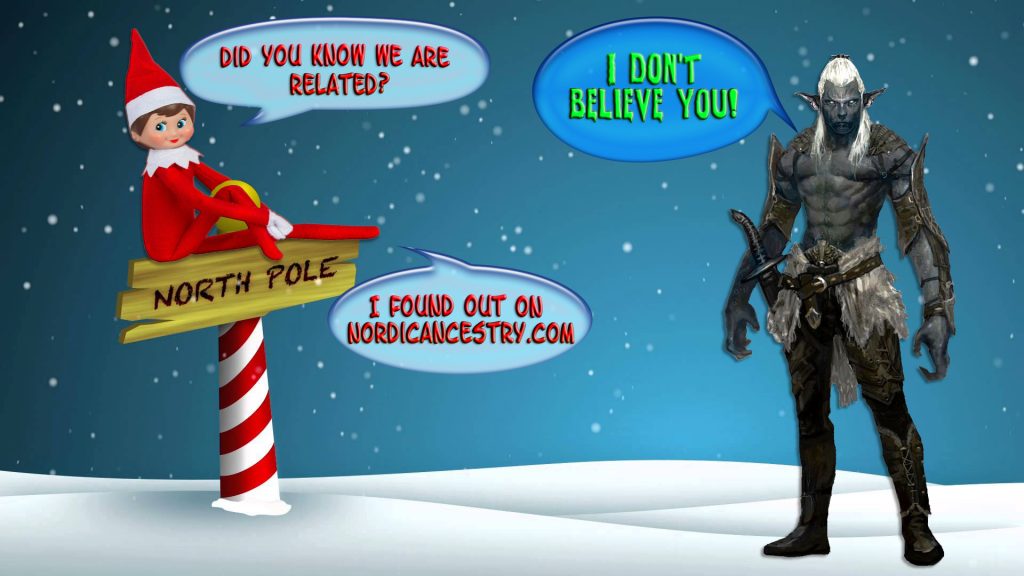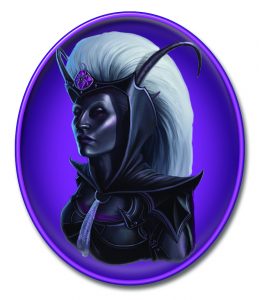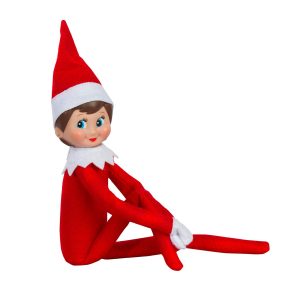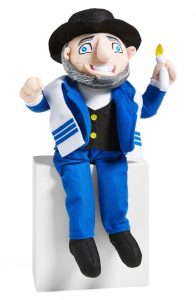Every holiday season, as you enter any of the big chain department stores, you are guaranteed to find huge pyramid or tower of shiny and beautifully decorated packages are labeled Elf on the Shelf and each year the displays seem to get larger and the product more expensive but where did the Elf on a Shelf come from? Was this the creation of some big corporate marketing scheme? Has the EOTS (Elf on the Shelf) always been around? The really big question that stems from this is simply, why elves? What I mean is, why does Santa employ elves in his workshop? Were they just living in the north Pole when he set up shop? Do they have to work for Santa or can they become an entrepreneur elf and start their own toy company? Why didn’t Santa choose orcs or gnomes or any other type of creature that would be bigger, stronger and more efficient to staff his workshop? This article will hopefully be able to find answer to these questions or at least help us understand the reasoning for choosing elves and the how the EOTS became so popular.
So, it seems to makes sense to start this investigation by finding out more about the origin of elves and the details surrounding how we first discovered that they were the engine behind Santa’s Workshop. The first time that we begin to see elves appear is within Ancient Norse Mythology but it is believed that there is no single defined moment when they were created. The identity of the elf seems to be created from a variety of folklore that had similar creatures that evolved into the modern elf.

The original varieties of the elf were not as cute as we tend to depict them as in current times and were even considered strong and powerful enough to be placed side by side with Norse gods in some Ancient poems and possibly believed to be their own type of god or placed in a group of Norse gods associated with fertility, known as the Vanir. They were also similar in stature to humans and were very secretive and hidden creatures. (So far, these creatures do not sound like the ideal choice for a jovial work environment at a toy manufacturer!)
In the 800’s Iceland was settled by 2 main groups: Celtic slaves that were brought there from Ireland and Scandinavians. These 2 cultures both had a variety of myths that included sprits, fairies and elves and it is believed that these mythical creatures were mixed together to create the álfar. The álfar was also known as the huddlefólk which translates to “hidden folk”.
Elves and other mythical creatures that were similar were also found in other parts of Europe, including England, where you can find an extremely vile and sinister depiction the elfish race in ancient story, “Beowulf”. The story states that elves were extremely evil and a direct descendant of Cain. Although there were a variety of depictions of elves in Europe between 800AD – 1000AD, they were still considered to be comparable in size to humans. However, at this time there were many areas of Europe that did see elves as a good-natured creature and as time continued to pass the majority of the evil and dangerous characteristics began to fade away and evolve into something much less scary and unapproachable and more like a leprechaun or a prankster like Rumpelstiltskin. (Again, it still seems like a bad fit for someone staffing a toy manufacturing company!)

Through my research it seems that the association of elves with Christmas does not begin until the 1800’s. This is also the same time frame that we start to see the start of Christmas traditions that we still see today or commonly still associate with Christmas mainly due to the poem that was written in 1823 “The Night Before Christmas”. The poem was originally titled “A Visit from Saint Nicholas” and within the text of the poem Santa is referred to as a “jolly old elf” and it was published anonymously but it was later credited to Clement Clarke Moore. The one thing that does not make sense about this is that Santa is not tiny, does not have big pointy ears, and does not look at all like he is related to any of the elves that are ever around him. If Santa is an elf, does this mean that all the other worker elves are the offspring of Santa and Mrs. Clause? Do they employ their own children to build all of the toys for all the good little girls and boys and how did Mrs. Clause endure the experience of childbirth hundreds of times if not thousands?
After the release of Moore’s poem, elves started popping up more and more in literary works written about Santa and Christmas and they were illustrated as the small, adorable and cute being that we think of today. In 1922 Norman Rockwell released a Christmas themed painting, entitled “Santa with Elves”, that showed elves working hard to finish building some toys with Santa watching.

The Elf on the Shelf (EOTS) was created in 2005 by Carol and Chanda Aebersold (mother & daughter), who wrote the children’s book titled “The Elf on the Shelf: A Christmas Tradition”. The illustrations are credited to Coë Steinward. The story explains how elves are used to visit children’s homes in December to watch the children and see if they are naughty or nice. The actual idea of this story was created by Carol Aebersold, who started this family tradition for her daughters, Chanda and Christa.
The big explosion of the EOTS crazy seems to begin around 2012 and 2013. In 2012 the EOTS made its first appearance in the Macy’s Day Parade and in 2013 the EOTS book reached the #1 spot on the USA Today Bestsellers list. We all now see this elf as a staple of Christmas traditions for the many families with children who celebrate Christmas, including myself.
You need not worry that the Jewish families and children who celebrate Chanukah are being left out from this new holiday tradition. In 2011 Benjamin Goober Elkins created the “Mensch on a Bench”, the counterpart to the EOTS and it looks more like a rabbi instead of an elf. Neal Hoffman was able to help raise the funds using crowdfunding to help get the toy created. The “Mensch on a Bench” is now one of the mascots for the Team Israel Baseball team and a 5-foot version of the toy sits on the bench in the dugout for every game. He also has his own locker and occasionally will attend the teams press conferences.

So the research I was able to find definitely helped us understand the origin of elves and when and how they were implemented into holiday traditions. It also helped us to understand the where the new tradition of the Elf on the Shelf came from but I don’t think anyone really knows where Santa’s elves came from and how they became his workers. I could not find any factual data to prove if the elves are related to Santa biologically or if they do not have any familial ties. I was also unable to locate any proof of whether or not the elves get paid for their services or if even want to be working at Santa’s Workshop. I think the only way to ever truly answer these questions will be to travel to the North Pole and visit Santa’s Workshop personally, otherwise everything you hear will just be hearsay and opinion. I believe that it will take approximately 6-8 months to explore this region in hopes of successfully locating the workshop. I am not sure yet the total cost that will be needed for a trek of this kind but if you are as interested in finding the answers to these questions as I am, you can make donations to my PayPal account. Merry Christmas, Happy Chanukah, and Happy Holidays to everyone!!

I know this web page presents quality dependent articles
and other data, is there any other skte which presents
these kinds of things in quality?
I have added links to the blog that will give a little more detail about specific subjects in the article that you can click on and explore. They seem to have decent content and info. Hope this helps and thanks for reading!
May I just say what a relief to find somebody who
genuinely understands what they are discussing on the internet.
You actually understand how to bring an issue to light and make it important.
More people must look at this and understand this side of your story.
I was surprised you’re not more popular since you surely
possess the gift.
I appreciate your comments and I am glad you enjoyed the article. This blog is the first for me and it is great to hear feedback like this. It helps me to know that the articles are being read and enjoyed! Happy holidays!
Asking questions are really nice thing if you are not understanding something entirely, but this post gives good understanding even.
Keeep on writing, great job!
Thanks For the comment and taking the time to read the article! –Mike
Hi there, just wanted to mention, I loved this
post. It was practical. Keeep on posting!
I’m glad you enjoyed the post and appreciate the feedback! –Mike
I do agree with all the ideas you’ve offered on your post.
They’re really convincing and will definitely work. Still, the posts are very quick for starters.
May you please prolong them a little from subsequent time?
Thanks for the post.
Thanks for reading and for the comments and feedback! I will try to add more content to future posts! –Mike
Hi there, after reading this remarkable article i am as well glad to share my know-how here with friends.
Glad to be able to provide info that you can share! –Mike
bookmarked!!, I love your website!
Glad to hear you enjoy it! There will be more great content to come very soon! –Mike
Simply desire to say your article is as astounding. The clarity in your post is just spectacular and i could assume you are an expert on this subject. Fine with your permission let me to grab your RSS feed to keep up to date with forthcoming post. Thanks a million and please keep up the gratifying work.